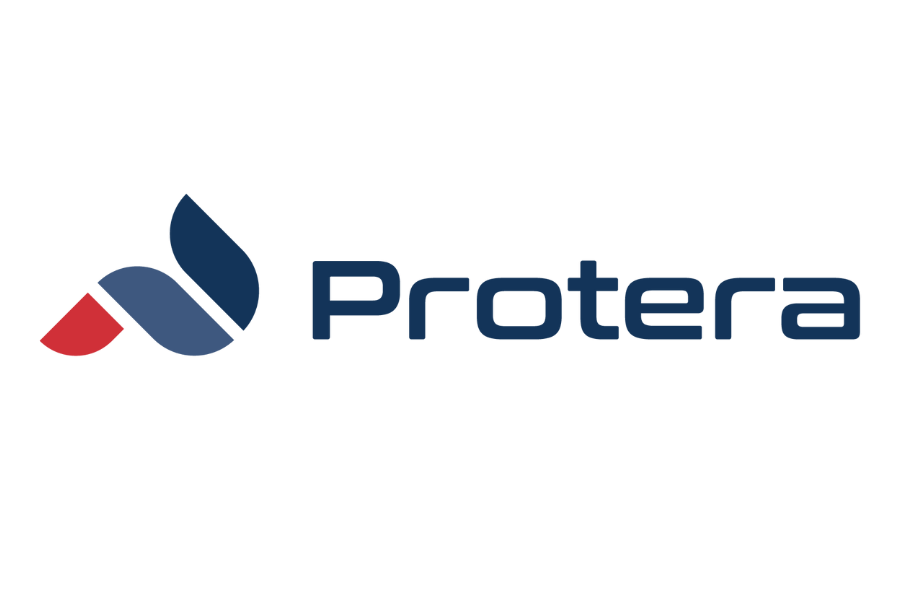Oil Gas and Energy
Filter By
Browse By
- SAP Analytics and AI
- SAP Application Development and Integration
- All SAP Application Development and Integration
- SAP ABAP
- SAP ABAP Development Tools
- SAP ABAP Test Cockpit
- SAP API Management
- SAP BAPI
- SAP Basis
- SAP BRF
- SAP Business Application Studio
- SAP CMS
- SAP Design Studio
- SAP Development Tools
- SAP DevOps
- SAP EAI
- SAP EDI
- SAP Extension Suite
- SAP Fiori
- SAP Fiori Elements
- SAP Integration Suite
- SAP Low Code Application Development
- SAP Low Code Automation
- SAP Netweaver
- SAP Release Management
- SAP UI5
- SAP Web Application Server
- SAP Web IDE
- SAP Business Process Management
- SAP Center of Excellence
- SAP CIO
- SAP Customer Experience
- SAP Data and Data Management
- All SAP Data and Data Management
- SAP BW
- SAP BW/4HANA
- SAP Crystal Reports
- SAP Data Archiving
- SAP Data Center
- SAP Data Governance
- SAP Data Integration
- SAP Data Migration
- SAP Data Quality
- SAP Data Services
- SAP Data Strategy
- SAP Data Visualization
- SAP Data Warehouse Cloud
- SAP DMS
- SAP Document Control
- SAP EIM
- SAP ETL
- SAP ETL Tools
- SAP HANA
- SAP HANA Administration
- SAP HANA Deployment Infrastructure
- SAP HANA Studio
- SAP Master Data
- SAP Master Data Governance
- SAP MDM
- SAP Enterprise Architect
- SAP Enterprise Asset Management
- SAP ERP
- SAP Finance
- All SAP Finance
- SAP Accounting
- SAP AR AP
- SAP Asset Accounting
- SAP Billing Systems
- SAP BPC
- SAP BRIM
- SAP Cash Management
- SAP Central Finance
- SAP Controlling
- SAP COPA
- SAP Cost Center Accounting
- SAP Currency Risk
- SAP e-invoicing
- SAP FICO
- SAP Finance Automation
- SAP Advanced Financial Closing
- SAP Financial Consolidation
- SAP Financial Planning
- SAP FX Risk
- SAP General Ledger
- SAP Global Tax Management
- SAP Hyperion
- SAP Order to Cash
- SAP Payment Processing
- SAP Profitability Analysis
- SAP Rebate Management
- SAP S/4HANA Finance
- SAP SWIFT Compliance
- SAP Treasury Management
- SAP Universal Journal
- SAP Governance Risk and Compliance
- SAP Human Capital Management
- SAP Intelligent Technologies
- SAP Platform and Technology
- All SAP Platform and Technology
- SAP Business Technology Platform
- SAP Cloud
- SAP Cloud Connector
- SAP Cloud Integration Platform
- SAP Cloud Migration
- SAP Cloud Platform
- SAP Cloud Providers
- SAP Cloud Strategy
- SAP Digital Signature
- SAP Container Platform
- SAP HANA Enterprise Cloud
- SAP Digital Asset Management
- SAP Smart Forms
- SAP HEC
- SAP Digital Integration Hub
- SAP Hyperscalers
- SAP Infrastructure
- SAP Messaging
- SAP Quality and Testing
- SAP Security
- SAP Spend Management
- SAP Supply Chain Management
- All SAP Supply Chain Management
- SAP APO
- SAP Asset Management
- SAP Business Network
- SAP Digital Manufacturing Cloud
- SAP Digital Twin
- SAP EWM
- SAP IBP
- SAP Inventory Management
- SAP Label Printing
- SAP Logistics
- SAP Manufacturing
- SAP Manufacturing Automation
- SAP MES
- SAP MII
- SAP MM
- SAP MRO
- SAP MRP
- SAP Order Management
- SAP Plant Maintenance
- SAP PLM
- SAP Production Planning
- SAP S&OP
- SAP SD
- SAP SPM
- SAP Supply Chain Planning
- SAP Track and Trace
- SAP Transportation Management
- SAP System Administration
SAP Oil Gas and Energy
is helping companies to optimize production, streamline operations, and improve customer satisfaction. Oil and gas have been the world’s premier fuel sources for over a hundred years, powering vehicles, heating homes, and generating electricity. The challenge is that oil and gas are non-renewable resources. As global demand for these fuels increases, so does the pressure on the limited oil and gas supplies.
SAP Oil Gas and Energy
is helping companies to optimize production, streamline operations, and improve customer satisfaction. Oil and gas have been the world’s premier fuel sources for over a hundred years, powering vehicles, heating homes, and generating electricity. The challenge is that oil and gas are non-renewable resources. As global demand for these fuels increases, so does the pressure on the limited oil and gas supplies.
Companies must sustainably manage these resources with the world moving toward digitalization, globalization, and innovation. Oil and gas industry organization One way is to improve the efficiency of the oil and gas industry. To stay at the forefront of competition, oil, gas, and energy companies must comply with environmental regulations and reduce their carbon footprint, to sustain their businesses for the long run. SAP Oil Gas and Energy enables an intelligent, sustainable enterprise in the industry.
Key capabilities of SAP Oil Gas and Energy include:
- Includes control design and engineering, new product/services development, portfolio and project management, resource planning and scheduling, and operations cost/milestone transparency.
- Includes field logistics collaboration tools, integrated production management, and revenue management.
- Includes commercial sales and marketing, commodity procurement, sales, and risk management, processing visibility, integrated real-time trading and scheduling, and secondary distribution automation.
- Includes physical asset management, operational risk mitigation, materials management, workforce management, and asset performance management.
SAP Road Map for Oil, Gas, and Energy includes:
- Current release highlights: Project management suite, integrated revenue accounting, mobile UI with real-time data access, and intelligent asset management.
- Upcoming innovations: Cloud-based project management, interactive UI for supply chain management, asset monitoring with detailed sensor data
- Future Plans: Intelligent project management, advanced structures to support contract, cost, and revenue elements, end-to-end process for asset management
SAP software solutions to meet your needs include SAP S/4HANA Cloud, SAP Integrated Business Planning for Supply Chain, SAP BTP, SAP Analytics Cloud, and SAP Cloud for Sustainable Enterprises.
Key Considerations for SAP organizations:
How the Motor Oil Group adopted a transformative technology culture and partnered with SAP to become an integrated energy conglomerate. Review the case study about how one of the largest European energy companies that supply major industrial and commercial customers leveraged SAP solutions to infuse their traditional oil and gas business with transformative digital capabilities.
Leverage SAP Oil Gas and Energy solutions to address gaps across baseline industry workflows. Oil, gas, and energy companies can benefit from integrated workflows limiting disparate IT systems. These disparate systems can impact visibility and reduce efficiency across core business processes, such as trading energy inventory. This article shows how SAP solutions helped an energy company provide more efficient trading and scheduling, translating multiple business outcomes, including margin improvements.
Explore cloud-based solutions to help fast-track opportunities for Oil, Gas, and Energy industry innovation.Read insights from this blog on how the Motor Oil Group implemented SAP HANA Cloud with SAP Analytics Cloud to help improve refinery downtime. Here we see the importance of conducting a pilot project first, allowing organizations to save time and resources in the long run.
68 results
-

How Grainger Saved Costs While Fast-Tracking SAP S/4HANA Adoption
Reading time: 3 mins
Grainger faced mounting data challenges while preparing for an SAP S/4HANA migration, with rapid database growth and complex legacy structures. Through expert-led data archiving and optimization, they achieved a 66% volume reduction, saving over $1.5 million in annual costs and accelerating their migration timeline. The project highlights how clean core strategies and efficient data management…
-

The Role of Accruals Automation in Streamlining Financial Workflows
Reading time: 2 mins
Automating the accrual process transforms financial closing by enhancing accuracy, compliance, and transparency while reducing manual effort. Tools like accrual automation engines and integrations with ERP systems streamline approvals, enforce regulatory standards, and provide audit-ready reporting. By leveraging automation, organizations can improve financial reporting, mitigate compliance risks, and increase productivity across finance teams.
-

5 Ways Accrual Process Automation Helps Ensure Compliance within SAP
Reading time: 3 mins
Automating the accrual process transforms financial closing by enhancing accuracy, compliance, and transparency while reducing manual effort. Tools like accrual automation engines and integrations with ERP systems streamline approvals, enforce regulatory standards, and provide audit-ready reporting. By leveraging automation, organizations can improve financial reporting, mitigate compliance risks, and increase productivity across finance teams.
-
-

Is My Business AI Ready? Laying the Data Foundation for Successful AI Implementation
Reading time: 5 mins
Successful AI adoption requires more than enthusiasm; it depends on the readiness of an organization’s data and infrastructure. Companies must focus on data quality, governance, accessibility, integration, and security while managing both structured and unstructured data to create a cohesive AI-ready environment. Coupled with strategic alignment to business goals, these practices lay the foundation for…
-

6 Best Practices for Setting Up Retention Policies in SAP
Reading time: 2 mins
Setting up effective SAP retention policies is essential for regulatory compliance, data security, and operational efficiency. Organizations should categorize data, apply automated retention rules via SAP ILM, and maintain audit-proof records while customizing policies to meet global and industry-specific regulations. Regular testing and monitoring ensure that retention policies function correctly, enabling organizations to manage data…
-

Building a Budget for Your Journey to SAP RISE
Reading time: 5 mins
A successful SAP RISE transformation starts long before cloud migration approval, with careful budgeting, data analysis, and requirement gathering. Reducing data volumes through cleaning and archiving helps lower migration costs, simplifies system integration, and ensures regulatory compliance. By planning early, defining clear requirements, and aligning timelines with the SAP ECC end-of-life, organizations can create a…
-

Understanding Data Tiering vs. Data Archiving: Which is Better to Prepare for SAP RISE?
Reading time: 3 mins
Effective data management is critical for a successful SAP RISE or S/4HANA migration. While data tiering helps optimize storage for frequently accessed data, it does not address migration speed, compliance, or long-term management. Data archiving, on the other hand, moves inactive data to cost-effective storage, reduces migration complexity, ensures regulatory compliance, and provides long-term cost…
-
-

The Hybrid Approach for End-to-End Procure-to-Pay (P2P) Automation
Reading time: 5 mins
Efficient P2P management is critical for operational success, yet manual processes create inefficiencies, errors, and compliance risks. By adopting a hybrid automation approach, integrating SAP Ariba for procurement, OpenText VIM for invoice management, and AI-powered accruals, organizations can streamline sourcing, invoicing, and financial close while maintaining compliance and visibility. This end-to-end automation delivers faster cycle…
-

Managing HR Documents from Recruit to Retire — Extended ECM for SuccessFactor
Reading time: 4 mins
Managing HR documents across the employee lifecycle can be complex and compliance-intensive. SAP Extended ECM by OpenText for SuccessFactors simplifies this by centralizing all HR-related content, automating document workflows, and ensuring governance and data security. By integrating with SuccessFactors, organizations can streamline onboarding, enhance compliance, and deliver a more efficient and user-friendly HR experience.
-

Navigating M&A Compliance: Key Challenges and Solutions for Mergers, Acquisitions & Divestitures
Reading time: 4 mins
Mergers, acquisitions, and divestitures demand strategic management of IT systems and data to maintain compliance and operational stability. Companies face challenges such as integrating or separating complex infrastructures, managing data effectively, and retiring outdated systems. By adopting structured solutions, like improving data governance, optimizing business processes, and leveraging modern technologies, organizations can turn these transitions…
Become a Member
Unlimited access to thousands of resources for SAP-specific expertise that can only be found here.
Become a Partner
Access exclusive SAP insights, expert marketing strategies, and high-value services including research reports, webinars, and buyers' guides, all designed to boost your campaign ROI by up to 50% within the SAP ecosystem.
Upcoming Events
-

SAPinsider Technology Executive Forum
December 02 - 03, 2025
Phoenix, Arizona
United States
View Event
Related Vendors
Your request has been successfully sent

